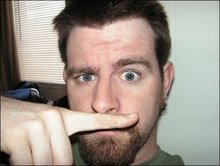From the Greek words ‘daimon’, meaning ‘tutelary deity or lesser god’, and ‘latreia’, meaning ‘service or worship’ comes the modern word of Demonolatry, meaning worship of demons. Followers of Demonolatry are known as, if male, Demonolators, and, if female, Demonolatresses.
While their maybe a minority of Demonolators who worship demons under the transposed meaning of demons as evil entities and creatures of hell, most Demonolaters reject that meaning. This article will be focused on those Modern Demonolators, the majority, who worship demons as the ancient Greek word, and later Latinized version, meant: ‘lesser god, guiding spirit, tutelary deity’ that are ‘replete with knowledge’.
Modern Demonolatry is a polytheistic religion that worships many demons as part of a pantheon, along with associated mythology and rituals. It is not a universally codified religion where all Demonolators worship the same pantheon and follow the same beliefs, but rather a personal religion where each person or group chooses what pantheon to believe in as well as beliefs to follow. As such, there are those whose beliefs can be called soft polytheistic by believing that the demons are facets that are part of the whole; as well as those who can be called hard polytheists that believe that the demons are complete and separate entities.
Demons
The Demons worshipped by Demonolators are many times are the actual gods of the pre-Christian civilizations. They are viewed as complex entities of greater or lesser status within the pantheons. They each have their own individual skills, specialization’s and spheres of control, along with their own needs, desires and histories. Since they are ‘guiding spirits’ that are ‘replete with knowledge’, Demonolators view the demons as teachers and mentors and form relationships with individual demons as such.
There is a natural balance in Demonolatry for demons are binary opposite in nature. For every demon of destruction and fire, there is a demon of creation and water; but not all demons can be classified as extremes for there are demons that fall between, in the gray areas between black and white.
Pantheons
Of the many ‘codified’ pantheons followed by Demonolators, two of them are more widespread than others. The Richard Dukante Hierarchy, and the Goetic Hierarchy.
In 1963 Richard Dukanke released his Hierarchy, which consists of nine families of demons. He compiled it from the grimoires of Demonolator families and it is one of the few hierarchies in existence that included female demons. Dukante was still working on his hierarchy until his death so it still remains uncompleted.
The Goetic Hierarchy comes from the ‘Ars Goetia’ also known as ‘The Goetia’, the first section of ‘The Lesser Keys of Solomon, a 17th century text that is claimed to have been written by King Solomon. The Goetia names seventy-two demons and assigns them ranks and titles of nobility.
Many Demonolators follow a pantheon of their choosing that contain demons from a variety of sources, but regardless of what pantheon followed, most Demonolators also choose a Patron or Matron Demon which they worship above all others.
Practices
Since Demonolatry is not a universally codified religion, there is no ‘set’ practices that Demonolators adhere to. However, they’re two types of practices that exist: religious and magical.
Religious Demonolatry primarily deals with the adherence and observation of certain religious holidays spread across the calendar year. These are celebrations of certain aspects of life, such birth and death. Prayers for self-empowerment are also practiced religiously.
Magical Demonolatry is not something that is practiced by all Demonolators, however all Demonolators practice religious demonolatry. Those who do practice magic do so in a manner that is believed is more respectful to the demons and as such demons are never evoked, or called forth against their will, but rather invoked, or invited to be present during a magical ritual.
Demonolatry Families
They are some Demonolators who claim to follow generational demonolatry, which they first learned about from a parent or older family member and that many more in their family are also following. These demonolatry families claim to reach upwards of five hundred years into the past, with traditions being past on through many generations and though many personal journals or grimoires.
Holidays Observed
The holidays and rites observed by Demonolators vary from one Demonolator to another as the following of hierarchies vary from one Demonolator to another. However they are many Demonolators who observe the spring and fall equinoxes, and the summer and winter solstices by celebrating a rite to whatever demon they find appropriate. A celebration of a Demonolators Matron or Patron demon is also practiced.
Technorati Tags: Demonolatry
The Satanic Panic – Then and Now
4 years ago







1 comment:
Hi Jeremy!
I have been reading through your blogs and found them really interesting. I saw this:
Modern Demonolatry is a polytheistic religion that worships many demons as part of a pantheon, along with associated mythology and rituals. It is not a universally codified religion where all Demonolators worship the same pantheon and follow the same beliefs, but rather a personal religion where each person or group chooses what pantheon to believe in as well as beliefs to follow. As such, there are those whose beliefs can be called soft polytheistic by believing that the demons are facets that are part of the whole; as well as those who can be called hard polytheists that believe that the demons are complete and separate entities.I'm not so sure that it is as easy as being hard or soft polytheistic. I consider myself atheist therefore Dæmons are not gods (as no god exists). How does this change your view on Modern Dæmonolatry, knowing that a Dæmonolator is atheist? All this said, however, I do always say that should I shift my perception of the Dæmon, I would most probably become a hard polytheist, but at this point in my evolution, I am an atheist.
Pav
Post a Comment